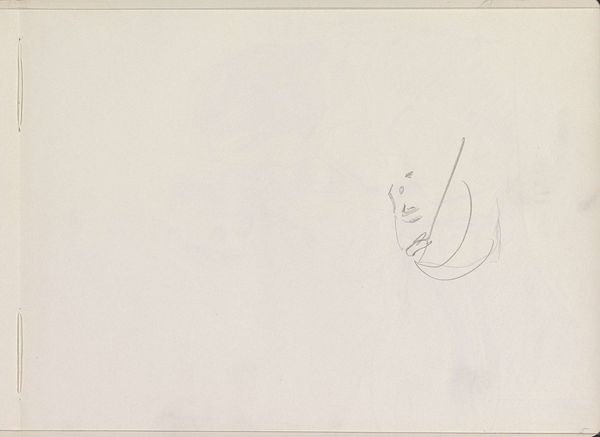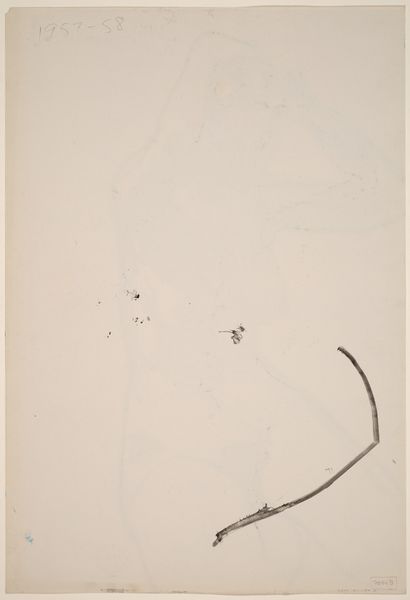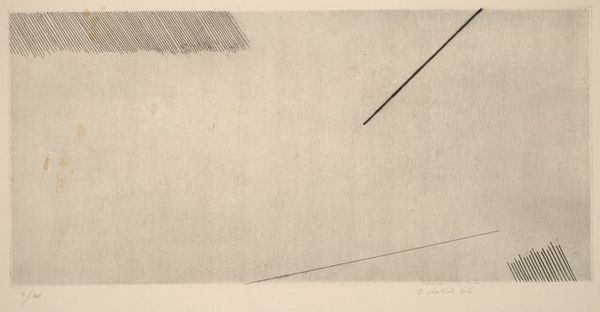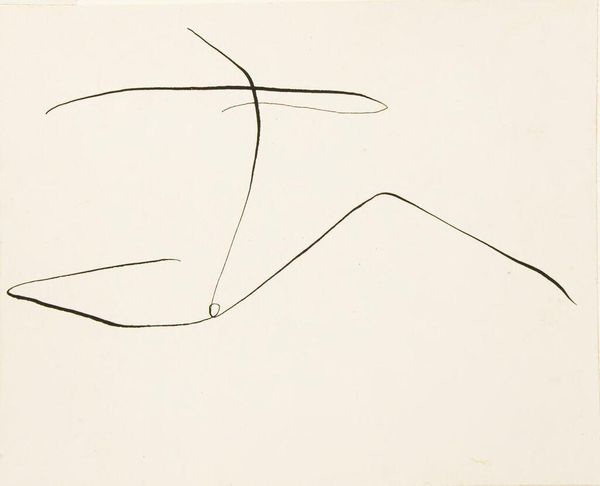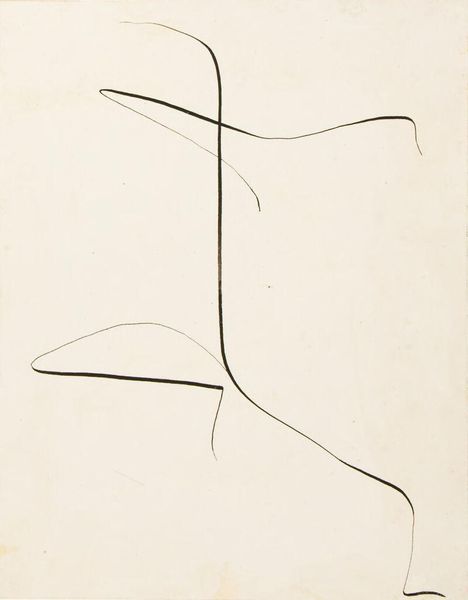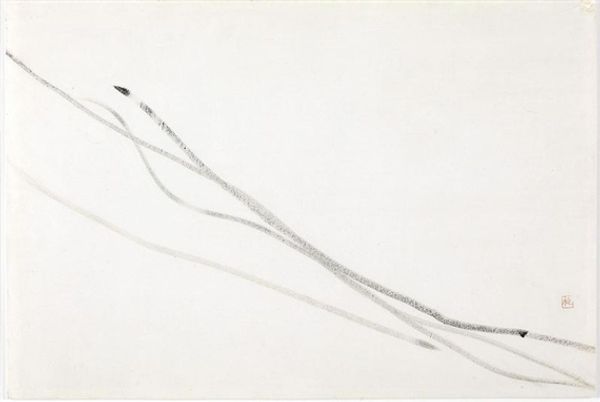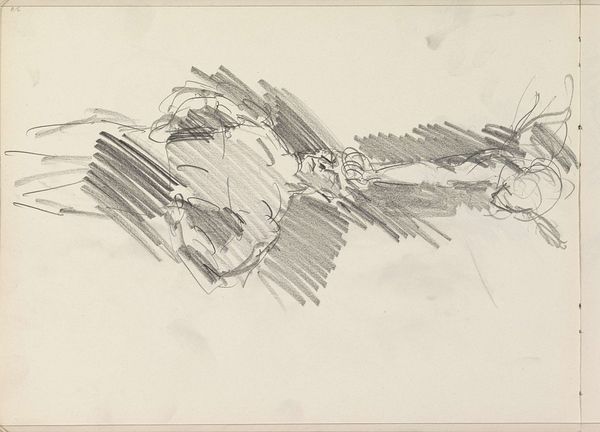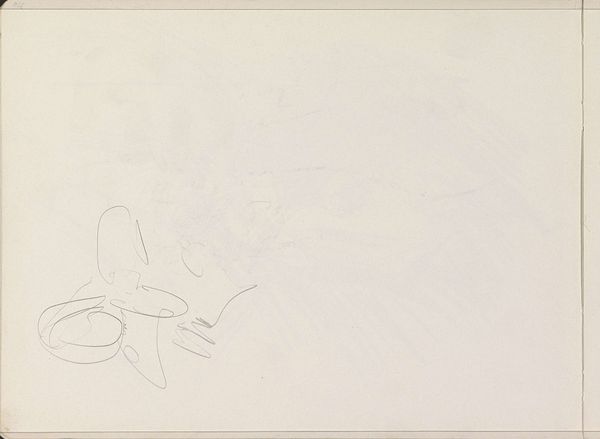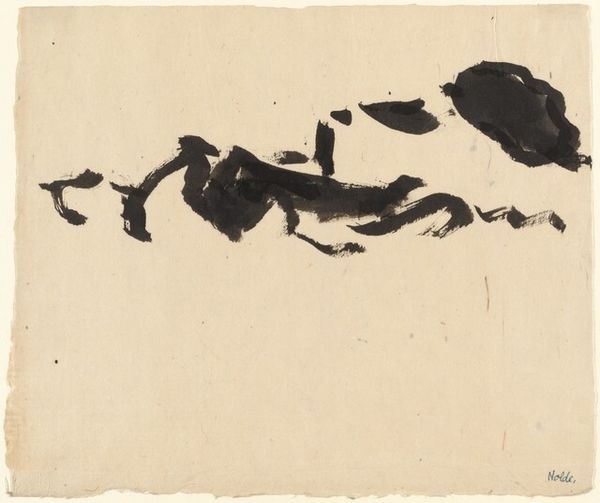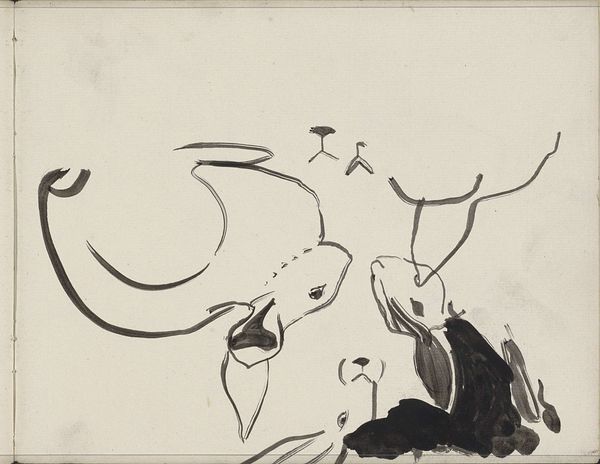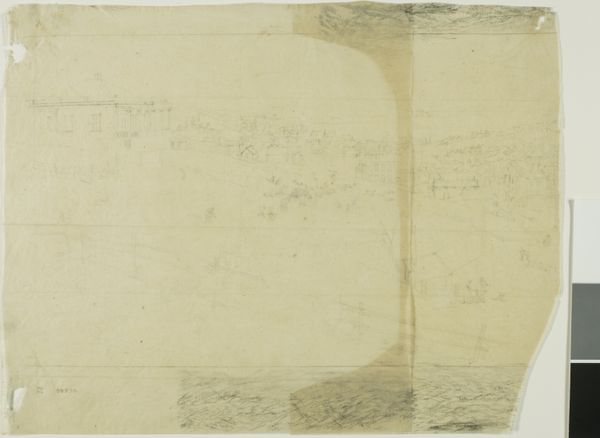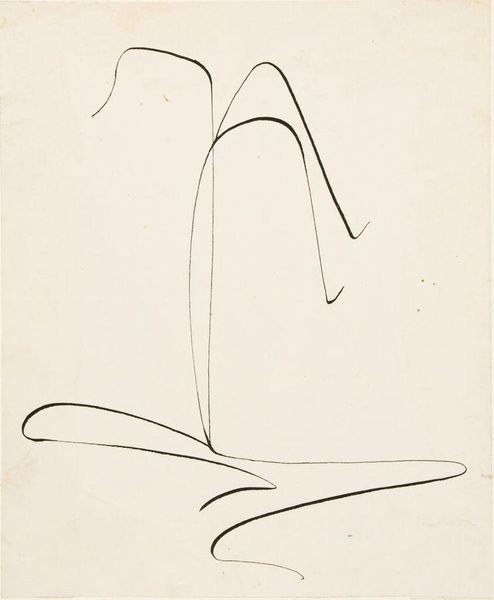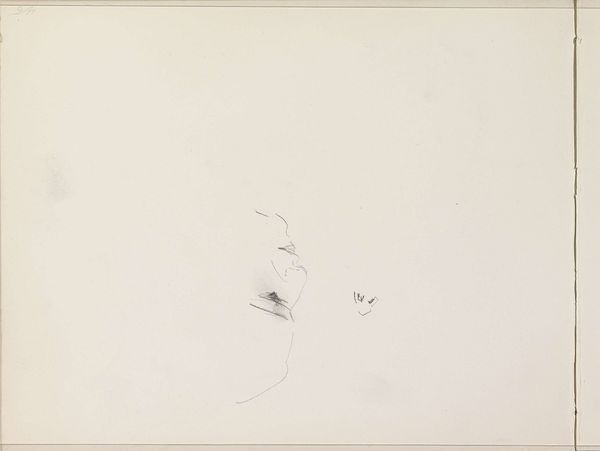
graphic-art, print, paper, monoprint, ink
#
abstract-expressionism
#
graphic-art
#
non-objective-art
#
ink paper printed
# print
#
paper
#
monoprint
#
ink
#
geometric
#
abstraction
#
line
Dimensions: image: 49 x 63.5 cm (19 5/16 x 25 in.) sheet: 51.2 x 68.5 cm (20 3/16 x 26 15/16 in.)
Copyright: National Gallery of Art: CC0 1.0
Curator: Up next, we have Karel Malich’s “Graphic Sheet 3 Series IX”, a monoprint in ink on paper, created between 1969 and 1970. Editor: Oh, I see... minimalism with a side of Zen koan. Two simple lines float in this sea of off-white paper, and my brain just wants to assign meaning to it, to complete the picture. Is it a smile? Is it a tear? Or am I projecting too much of my own baggage onto a couple of graceful arcs? Curator: That tension between intention and interpretation is exactly where Malich wants us to be. Think about Czechoslovakia at that time—a period of Soviet occupation. Many artists used abstraction as a form of coded protest. Editor: So these seemingly simple lines could be interpreted as some kind of veiled commentary on the political climate? A visual whisper of dissent? I find that fascinating! It transforms the piece from being just aesthetically pleasing into something imbued with quiet defiance. Curator: Exactly. Consider the act of creating a monoprint itself. It’s inherently unique; there are no identical copies. In a society that prized uniformity, a singular, unrepeatable image becomes an act of resistance. And the line becomes something of its own world, perhaps its own person or thought. Editor: And that limited palette emphasizes the purity of the line. It's stark, direct. The absence of colour amplifies its quiet impact. It's forcing us to focus on the small visual details. What's that edge that looks almost torn? Curator: The distressed edges also speaks to that idea of unique touch; of a subtle, beautiful violence—or at least a conscious destruction—within its creation. They act to reinforce its materiality. Editor: I've spent way more time pondering two lines than I ever thought I would, but it makes me think differently about even what abstraction can say in its pure forms. Curator: Absolutely, Karel Malich encourages us to find the sublime in the understated and, maybe, to never underestimate the power of simplicity in the face of complexity.
Comments
No comments
Be the first to comment and join the conversation on the ultimate creative platform.

